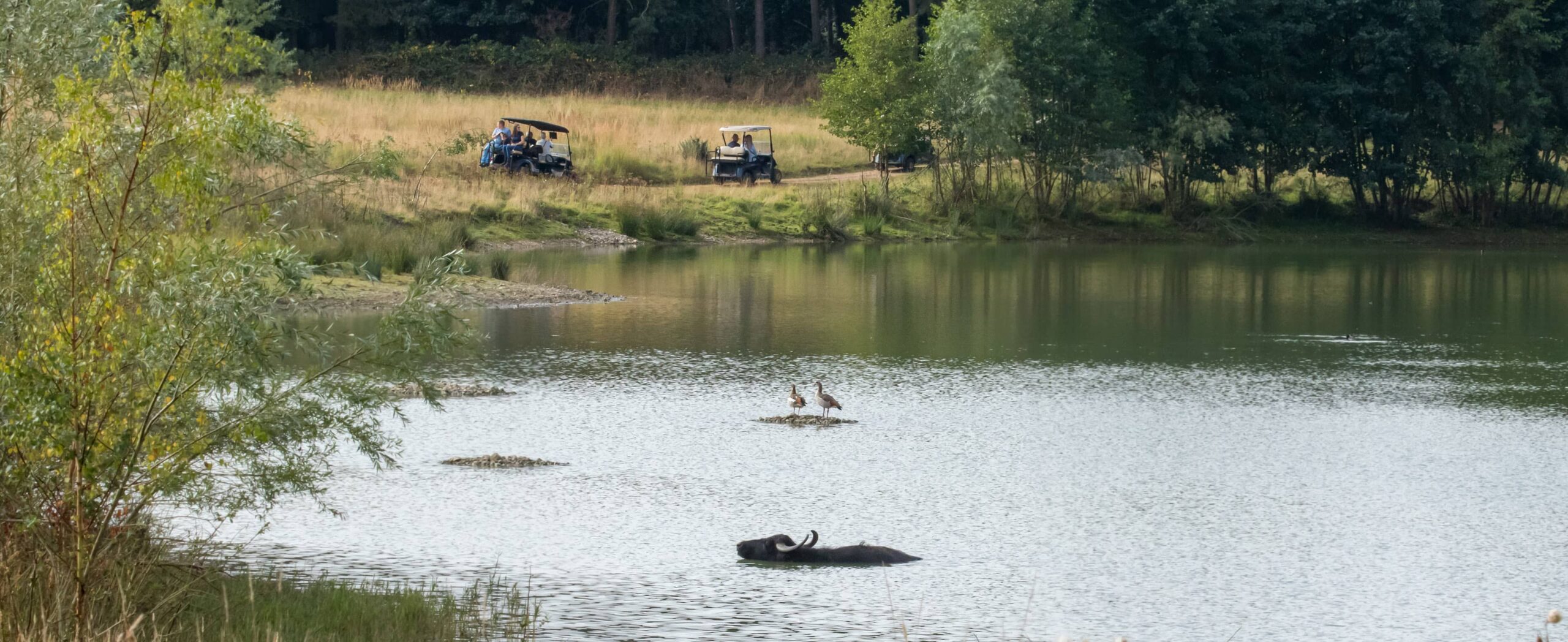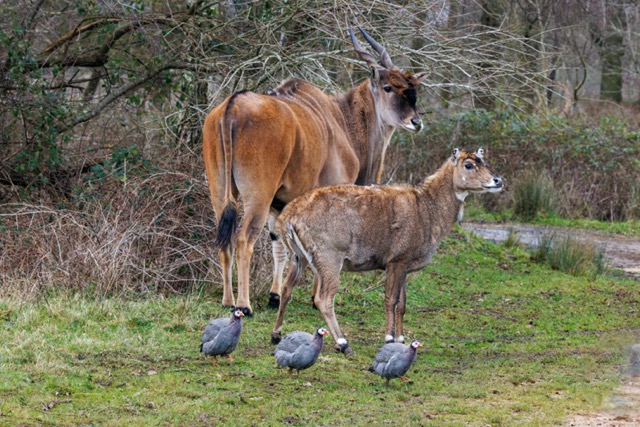Watatunga -a piece in the puzzle

The driver for our work at Watatunga is to support international conservation efforts for endangered birds, deer and antelope in whatever way we can. Sometimes that might mean using our 170 acres to look after several bachelor males, not currently needed for breeding, but who risk causing trouble together in a smaller space. Sometimes it might be because our varied habitat allows for more timid species to raise their young successfully in the privacy of the undergrowth. At other times we’ve been a staging post for animals destined to be sent to reserves in Africa, our situation providing them with mixed vegetation to browse on and boost their gut development before life in the semi-wild.
Each scenario and species we take on is different and nuanced and we are only ever part of a bigger picture – a whole system of passionate teams striving to maintain the best captive genetics for these populations in case one day they are needed to boost populations in the wild. For my non-animal-background brain, I think about the zoo work in Europe as being a bit like the seed-bank at Kew Gardens which serves a long-term purpose, but also has the potential for a more immediate gain – public education which, if effective, has the potential to minimize the decline in wild populations. Apologies to the experts amongst you if the analogy is clunky.

This week we bid farewell to one of our most endangered species, the Nile lechwe, pictured above. We have the last female in the whole of the U.K. and it is so important that she has the possibility to breed as she is 4 years-old; in her prime. Not being part of the EEP (European Endangered Species Programme) for this species, it is not possible for this to happen at Watatunga and so we are donating her to Africa Alive where they have a male Nile lechwe in need of a mate. This kind of institutional collaboration is vital to successful captive breeding programmes and while we are sad to see her go, we are so excited to have played a part in the future of this species by helping to preserve this species in captivity.
Before marrying a man obsessed by antelope, (Ed, Watatunga founder), I confess I knew nothing much about the plight of the Nile lechwe, scimitar-horned oryx or the eastern mountain bongo. I certainly never expected that their Latin names would trip off my tongue, closely followed by their IUCN status (a measure of threat level for the wild population). But Watatunga is all about learning and bringing some of the world’s most threatened species to centre stage, allowing the ungulates to be the stars of the show, making their stories accessible and entertaining and once you’re hooked, you can’t help but care deeply about what happens.


But what about our species that are not so threatened? Why do we have our blackbuck, Kafue flats lechwe, chital and eland – there are plenty of species here that are thriving in the wild and not of an immediate conservation concern. In part, it’s our bread and butter – we need a variety of animals to make our tours entertaining – but more important than that, we feel our site and varied habitat allows us to try new things.
While we cross our fingers that plans for our ‘high-stakes’ conservation species such as our white-lipped deer, eastern mountain bongo, white-naped crane and Javan peafowl may come off, we are also constantly experimenting with new approaches to the husbandry of captive deer and antelope. Much of what we do is innovative as we have the privilege of a very different kind of enclosure – one which includes grasses, ancient woodland, marsh and plenty of cover for species to hide. We feed differently to most collections due to the quantity of natural browse available at different times of year, we catch differently, we medicate differently and we’re learning all the time. Not all of it works and we have plenty to learn but we’re excited by the feedback we have had from visiting zoo professionals and the encouragement to keep doing what we’re doing from the wider hoofstock community. We have an opportunity here to experiment, to share what we learn and invite the feedback from the zoo population at events such as the ABWAK (Association of British and Irish Wild Animal Keepers) conference which our Reserve Manager Molly will be addressing this weekend.

Every tour at Watatunga is a learning experience, what one of our tour guides refers to as ‘edutainment’. The magic of it is that multi-generational groups can all access the tour and enjoy learning something together – and we love that about what we do. So yes, we do have species here whose populations are not diminishing in the wild, alongside those that are highly endangered. We are transparent about which you’re looking at on tour and we feel that by innovating new and beneficial husbandry practices for some of these captive species, we can feed into an enormous network of people and institutions working for the best possible outcomes for these species in a truly systemic way.
For now, good luck little lechwe – you’ll be missed on the reserve but we wish the team at Africa Alive all the very best for a successful future with this species.
Photo credits: Phil Stone